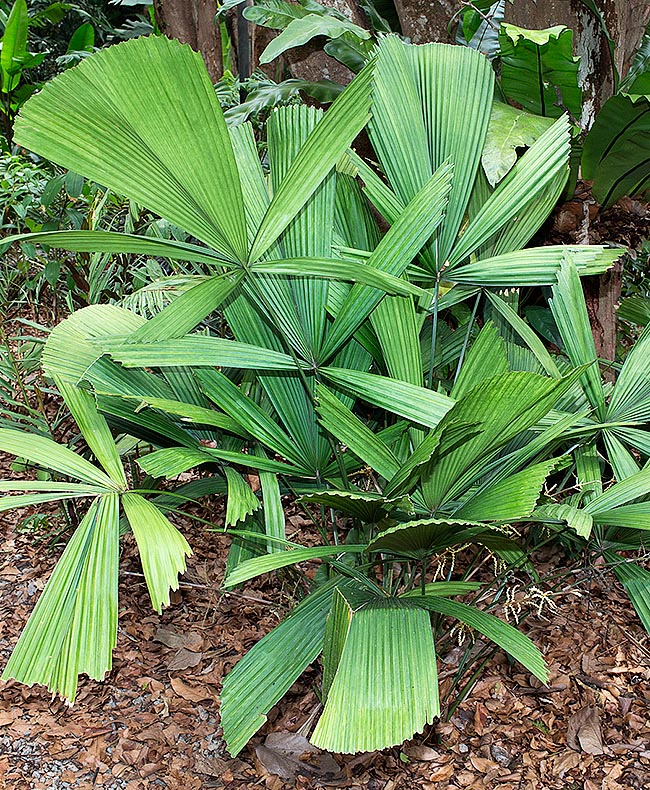Family : Arecaceae

Text © Pietro Puccio

English translation by Mario Beltramini

Native to Borneo, Licuala bintulensis is a palm rare in nature and in cultivation. Almost circular palmate leaves, up to 2 m of diameter. We see below the inflorescences, shorter than the petioles. Globose fruits of about 1 cm © Giuseppe Mazza
The species is native to Borneo (Brunei and Sarawak) where it lives in the underwood of the humid forests in proximity to the coast, often in swampy areas.
The generic name comes from the local one “leko wala” given to this genus of palms in the Maluku Islands; the specific name comes from one of the origin places, Bintulu, in Sarawak.
Common names: biru palm (English); biru (Malay).
The Licuala bintulensis Becc. (1886) is a monoecious species with single stem, short, with palmate leaves almost circular, up to 2 m of diameter, in the oldest specimens, divided up to the base in cuneiform segments of various length, narrow the outer ones, broader those in the central part, plicate, truncated and toothed at the apex. Petioles up to more than 2 m long, vertical that of the new leaf, gradually curved in the oldest ones, equipped at the margins of short conical spines of reddish brown colour. Inflorescences, usually shorter than the petiole, among the leaves (interfoliar), ramified of the second order, initially erect, then curved in fruit, with whitish hermaphroditic flowers, about 0,5 cm long, solitary or united in groups of 2-3. Globose fruits, of about 1 cm of diameter, initially green, then reddish when ripe, and warty, this last characteristic common only to few species belonging to the genus Licuala, containing one seed only.
It reproduces by seed, previously cleaned up from the pulp and kept in lukewarm water for two days, in aerated and draining loam maintained humid at the temperature of 26-28 °C. Rare in nature and in cultivation, suitable for outdoor use in the gardens shady and sheltered from the wind of the tropical and humid subtropical climate regions, where temperatures under the +10 °C are exceptional and short lasting occurrences, in draining loam rich of organic substance, maintained permanently humid, and with high and costant atmospheric humidity. Young specimens adapt to the cultivation in pot, for the decoration of greenhouses, winter gardens and inner spaces, even if poorly luminous, with daily temperatures over the 20 °C, night lowest values not under the 16 °C and ambient humidity over the 60%. The fertilizations, monthly from spring to autumn, are to be done utilizing a hydrosoluble balanced product, with microelements, at half the dosage shown in the instructions. Locally, the foliar segments are utilized for making headgears and the fibres of the petiole for sacks and baskets.
→ For general notions about ARECACEAE please click here.
